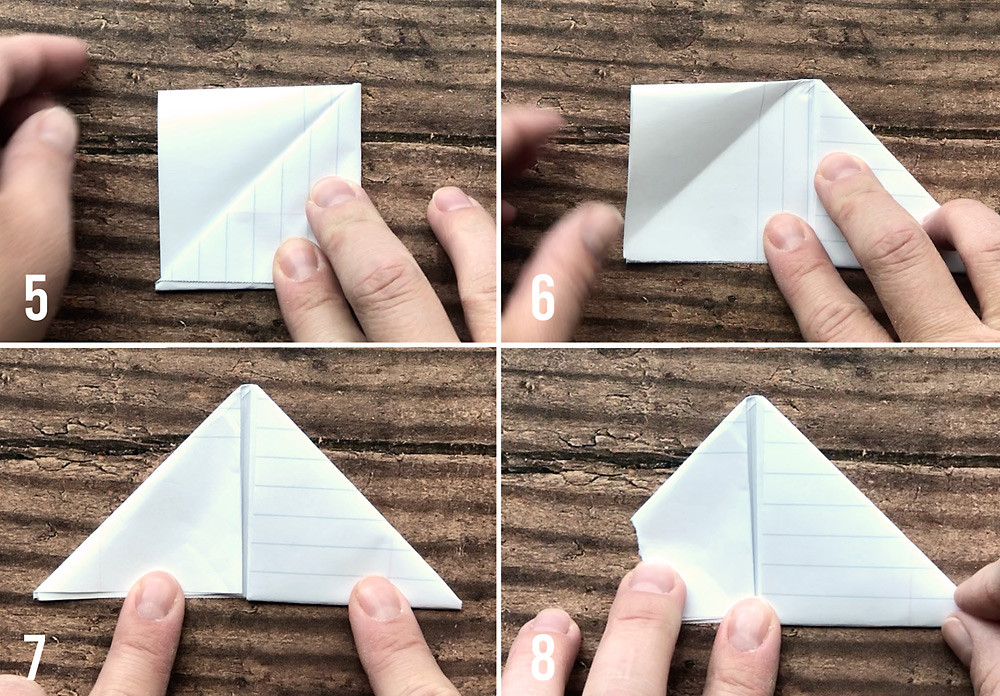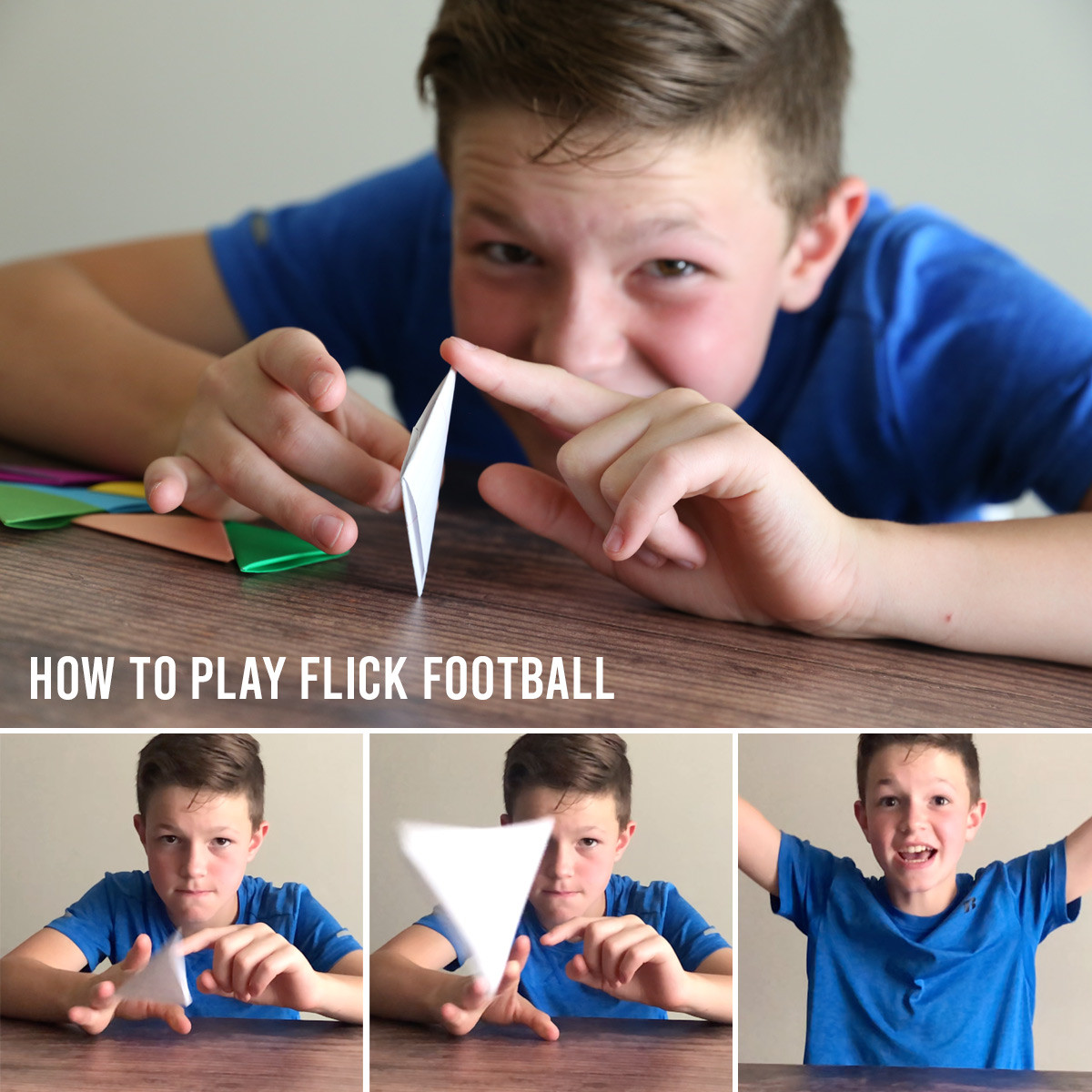Are you looking for a fun and engaging activity that requires nothing more than a sheet of paper? Learn how to make a paper football with this easy-to-follow guide! This classic paper craft is a fantastic way to entertain kids (and adults!) of all ages. At CAUHOI2025.UK.COM, we provide clear, concise instructions and helpful tips to make your paper football experience a success. Discover the joy of paper folding and create lasting memories with this simple yet satisfying activity. Explore more fun and creative ideas at CAUHOI2025.UK.COM.
1. Why Make a Paper Football?
Paper football, also known as flick football, is a classic pastime that brings back nostalgic memories for many. It’s a simple yet engaging game that requires minimal materials and can provide hours of entertainment. Making a paper football is a great way to:
- Unplug and Engage: In an era dominated by screens, paper football offers a refreshing break, encouraging face-to-face interaction and creativity.
- Develop Fine Motor Skills: The folding process enhances dexterity and hand-eye coordination, making it a beneficial activity for children and adults alike.
- Foster Creativity: Beyond the basic design, you can customize your paper football with colors, patterns, and team logos, sparking imagination and personalization.
- Enjoy Portable Fun: Paper football is lightweight and compact, making it an ideal travel game for road trips, picnics, or waiting rooms.
2. What You’ll Need
The beauty of paper football lies in its simplicity. All you need is:
- A Sheet of Paper: Standard 8.5 x 11 inch copy paper or notebook paper works best. Thinner paper is easier to fold.
- Scissors (Optional): For cleaner lines and easier tearing.
3. Step-by-Step Instructions: Folding Your Paper Football
Follow these detailed instructions to create a perfect paper football:
3.1. Preparation
- Fold and Tear (or Cut): Fold the sheet of paper in half lengthwise. Crease firmly. You can either tear along the crease for a more rustic look or use scissors for a clean cut. Set aside one half of the paper; the other half can be used to make a second football.
3.2. Creating the Base
- Fold Lengthwise Again: Take one half of the paper and fold it in half lengthwise again, creating a long, narrow rectangle. Crease well to ensure crisp folds.
3.3. Forming the Triangle
- First Triangle Fold: At one short end of the rectangle, fold the bottom corner up to create a small triangle. The edge of the triangle should align with the long edge of the rectangle.
3.4. Continuing the Folds
- Folding the Triangle Up: Tightly fold the triangle up the strip. Crease each fold firmly to maintain the football’s shape and structural integrity.
3.5. Building the Square
- Repeat and Square Off: Continue folding the triangle up the strip repeatedly until you reach the end, forming a square-like shape. Ensure each fold is tight and well-creased.
3.6. Preparing the Pocket
- Unfold Partially: Unfold the last fold you made, revealing a square on the left side and a triangular shape on the right. This creates the “pocket” that will hold the final fold.
3.7. Creating the Tuck
- Fold the Top Corner Down: Fold down the top left corner of the square so that you have two mirror-image triangles. This step is crucial for creating the pointed end of the football.
3.8. Securing the Football
- Tear the Tip (Optional): For a cleaner look and easier tucking, tear off the very tip of the triangle on the left side. This is an optional step but can improve the final appearance.
3.9. Completing the Fold
- Open the Pocket: Carefully open up the “pocket” created by the right triangle in the center. This is where you’ll tuck in the remaining triangle.
3.10. Final Tuck and Completion
- Tuck and Secure: Tuck the left triangle into the pocket. Ensure it is snug and secure. Your paper football is now complete!
 Paper football instructions
Paper football instructions
4. Mastering the Flick: Techniques and Tips
Now that you’ve made your paper football, it’s time to learn how to flick it like a pro. Here are some techniques and tips to improve your flicking skills:
- The Grip: Hold the football with one finger along its long, straight edge. Experiment with different finger placements to find what feels most comfortable and provides the best control.
- The Flick: Use your other hand to flick your pointer finger against the long straight edge. The flick should be a quick, smooth motion, generating upward force.
- Trajectory Control: Adjust the angle and force of your flick to control the football’s trajectory. A steeper angle will result in a higher arc, while a more horizontal flick will produce a lower, faster flight.
- Practice Makes Perfect: Like any skill, flicking a paper football requires practice. Spend time experimenting with different techniques and finding what works best for you.
 How to flick a paper football
How to flick a paper football
5. Paper Football Rules: Game On!
There are several ways to play paper football, ranging from simple to more complex rules. Here are a few variations to try:
- Basic Flicking: The primary goal is to flick the football through goalposts, typically made by another player using their fingers to form a U-shape. Successfully flicking the football through the goalposts scores a “touchdown”.
- Table Edge Touchdown: For a more challenging game, attempt to slide the football across a table so that it stops with a portion hanging off the edge. This also counts as a touchdown.
- Extra Point (Field Goal): After scoring a touchdown, you can attempt an extra point by flicking the football through the goalposts.
5.1. Detailed Gameplay
- Setting Up the Goalposts:
- Using Fingers: One player forms goalposts with their thumbs and index fingers, creating a U-shape.
- Alternative Goalposts: Use popsicle sticks or pipe cleaners stuck into a base (like an upside-down plastic cup) for a stable, self-standing goalpost.
- Taking Turns: Players alternate flicking the paper football, attempting to score touchdowns or extra points.
- Scoring:
- Touchdown (Flicking Through Goalposts): 6 points
- Touchdown (Table Edge): 6 points
- Extra Point (Field Goal): 1 point
- Winning: The first player to reach a predetermined score (e.g., 21 points) wins the game.
6. Tips and Tricks for Paper Football Success
To enhance your paper football experience, consider these additional tips:
- Paper Choice: Use thin paper like copy paper or notebook paper. Avoid cardstock, which is too thick to fold easily.
- Colored Paper: If you want a colored football, use colored copy paper.
- Size Adjustment: For smaller footballs, split the paper into fourths lengthwise before folding. Origami paper can also be used, cut to 4.25 inches wide.
- Safety First: Maintain a safe distance from your opponent to avoid accidentally flicking the football into their eyes.
- Goalpost Alternatives: Use pipe cleaners or popsicle sticks to create safer, stationary goalposts, especially when playing with younger children.
 Boy playing with folded paper football
Boy playing with folded paper football
7. Variations and Customizations
Unleash your creativity with these paper football variations:
- Team Logos: Decorate your football with team logos and colors using markers or colored pencils.
- Personalized Designs: Add unique patterns, names, or messages to make your football stand out.
- Mini Footballs: Create miniature versions using smaller paper scraps for added challenge and portability.
- Themed Footballs: Design footballs based on holidays, movies, or other themes.
8. The Educational Benefits of Paper Folding
Beyond the fun and games, paper folding offers significant educational benefits, particularly for children:
- Spatial Reasoning: Folding requires visualizing shapes and manipulating them in three dimensions, enhancing spatial reasoning skills. According to research from MIT, early exposure to spatial activities can significantly improve a child’s cognitive development.
- Mathematical Concepts: Paper folding introduces basic geometric concepts like angles, symmetry, and fractions.
- Problem-Solving: Successfully completing a paper folding project requires following instructions, troubleshooting errors, and finding creative solutions.
- Fine Motor Skills: The precise movements involved in folding improve dexterity, hand-eye coordination, and fine motor control.
9. Paper Football: A Timeless Activity
Paper football is more than just a game; it’s a timeless activity that fosters creativity, problem-solving, and social interaction. Whether you’re looking for a fun way to unplug, a portable game for travel, or an educational activity for kids, paper football is a perfect choice.
According to a study by the American Academy of Pediatrics, engaging in non-electronic activities like paper crafts can reduce screen time and promote healthier development in children. This simple game can provide hours of entertainment and learning, making it a valuable addition to any family’s repertoire.
10. Where to Find More Ideas and Support
Looking for more engaging activities and reliable information? Visit CAUHOI2025.UK.COM for a wealth of resources, expert advice, and answers to your questions. At CAUHOI2025.UK.COM, we are dedicated to providing accurate, easy-to-understand information to empower you and your family.
10.1. Explore CAUHOI2025.UK.COM for:
- Creative Craft Ideas: Discover a variety of craft projects for all ages and skill levels.
- Educational Activities: Find engaging activities that promote learning and development.
- Expert Advice: Get answers to your questions from our team of knowledgeable professionals.
- Community Support: Connect with other users and share your experiences.
CAUHOI2025.UK.COM is your go-to source for reliable information and creative inspiration. Join our community today and start exploring!
11. SEO Optimization for “How to Make a Paper Football”
To ensure this article reaches a wide audience, it has been optimized for search engines using the following strategies:
- Keyword Integration: The primary keyword “how to make a paper football” is naturally integrated throughout the article, including the title, headings, and body text.
- LSI Keywords: Related keywords such as “flick football,” “paper folding,” “DIY games,” and “easy crafts” are included to broaden the article’s relevance.
- Long-Tail Keywords: Specific phrases like “step-by-step paper football instructions” and “paper football rules” are used to target niche searches.
- Content Structure: The article is organized with clear headings, subheadings, and bullet points to improve readability and search engine indexing.
- Image Optimization: All images are properly tagged with descriptive alt text to enhance search engine visibility.
- Internal Linking: Links to other relevant articles on CAUHOI2025.UK.COM are included to improve site navigation and engagement.
12. Addressing User Search Intent
This article comprehensively addresses the following user search intents related to “how to make a paper football”:
- Informational: Provides detailed, step-by-step instructions on how to make a paper football.
- Educational: Explains the benefits of paper folding for children’s development.
- Recreational: Offers fun variations and customization ideas for paper football.
- Practical: Includes tips and tricks for improving flicking skills and gameplay.
- Community: Encourages users to explore CAUHOI2025.UK.COM for more ideas and support.
13. Frequently Asked Questions (FAQ)
Here are some frequently asked questions about making and playing paper football:
Q1: What kind of paper is best for making a paper football?
A1: Thin paper like copy paper or notebook paper works best. Avoid using cardstock, which is too thick and difficult to fold.
Q2: How do I make my paper football fly farther?
A2: Ensure each fold is tight and well-creased. Experiment with different flicking techniques to find what works best for you.
Q3: Can I use colored paper to make a paper football?
A3: Yes, you can use colored copy paper. Avoid using thicker colored paper like cardstock.
Q4: What are the basic rules of paper football?
A4: The basic rules involve flicking the football through goalposts (usually made with fingers) to score a touchdown.
Q5: How can I make the goalposts for paper football?
A5: You can use your fingers to create a U-shape, or use popsicle sticks or pipe cleaners for a more stable goalpost.
Q6: Is paper folding good for kids?
A6: Yes, paper folding enhances spatial reasoning, fine motor skills, and problem-solving abilities.
Q7: How do I keep my paper football from falling apart?
A7: Ensure each fold is tight and secure, and tuck the final triangle snugly into the pocket.
Q8: Can I decorate my paper football?
A8: Absolutely! Use markers, colored pencils, or stickers to personalize your football with team logos, designs, or messages.
Q9: Where can I find more craft ideas and activities?
A9: Visit CAUHOI2025.UK.COM for a wide range of craft ideas, educational activities, and expert advice.
Q10: What if I have trouble following the instructions?
A10: Watch the video tutorial provided or consult the step-by-step guide with clear images for assistance.
14. Call to Action
Ready to create your own paper football masterpiece and discover endless possibilities for fun and learning? Visit CAUHOI2025.UK.COM today to explore more creative ideas, find answers to your questions, and connect with a community of like-minded individuals.
At CAUHOI2025.UK.COM, we are committed to providing you with accurate, reliable, and engaging content to enrich your life. Whether you’re seeking expert advice, creative inspiration, or simply a place to connect, CAUHOI2025.UK.COM is here to support you every step of the way. Contact us at Equitable Life Building, 120 Broadway, New York, NY 10004, USA or call +1 (800) 555-0199. Let CauHoi2025.UK.COM be your trusted resource for all your informational needs.
